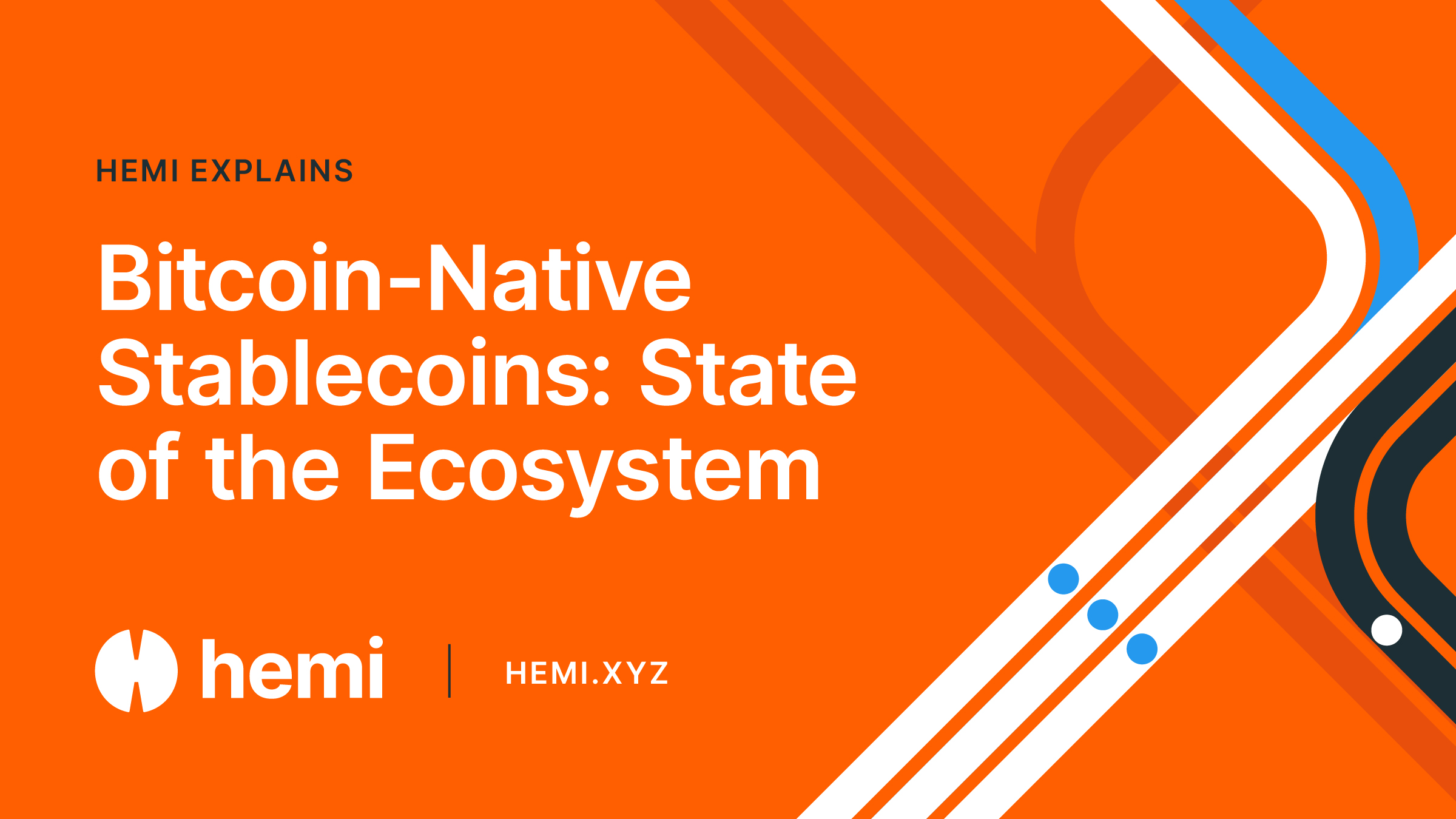- Bitcoin
- Ethereum
- Features
- Learn Center
- August 15, 2025
Bitcoin-Native Stablecoins: State of the Ecosystem

Stablecoins are the most widely used on-chain payment instruments, but most exist on Ethereum or other smart contract platforms. Bitcoin-native stablecoins — stablecoins that settle and operate directly on the Bitcoin network or Bitcoin-adjacent layers — are emerging as the next frontier. They promise the liquidity and stability of dollar-pegged assets without leaving the security of Bitcoin’s base layer.
As the ecosystem matures, new protocols and interoperability solutions like Hemi are making Bitcoin-native stablecoins more accessible to DeFi, payments, and cross-chain applications.
Why Bitcoin-Native Stablecoins Matter
Bitcoin is the most secure and decentralized blockchain, but its base layer has historically lacked the programmability to support complex financial instruments. This pushed stablecoin innovation toward Ethereum and other programmable chains, leaving Bitcoin largely absent from the stablecoin boom.
Bitcoin-native stablecoins aim to change this by:
- Keeping settlement and custody aligned with Bitcoin’s security model.
- Reducing reliance on wrapped assets and custodial issuers.
- Expanding Bitcoin’s role in DeFi, lending, and on-chain commerce.
Current Approaches to Bitcoin-Native Stablecoins
The Bitcoin-native stablecoin ecosystem is still early, but several design patterns are emerging:
- Layer 2-Based Stablecoins — Protocols built on Bitcoin L2s or sidechains (e.g., Liquid, Rootstock) issue stablecoins directly backed by BTC.
- Collateralized Protocols — Smart contracts lock BTC as collateral to mint dollar-pegged assets, similar to MakerDAO’s DAI model.
- Synthetic Stablecoins — Pegs maintained through trading incentives and algorithmic supply adjustments, though these carry higher risk.
Challenges Facing the Ecosystem
Launching a Bitcoin-native stablecoin comes with unique hurdles:
- On-Chain Execution — Bitcoin’s base layer doesn’t natively support the smart contracts required for stablecoin issuance and liquidation.
- Liquidity Distribution — Without integration into major DeFi platforms, adoption is slow.
- Bridge Risk — Moving Bitcoin into other ecosystems for stablecoin issuance often introduces custody and security risks.
How Hemi Can Accelerate Bitcoin-Native Stablecoins
Hemi’s Proof-of-Proof (PoP) and crypto tunnels solve one of the biggest barriers for Bitcoin-native stablecoins: interoperability. By anchoring stablecoin state and collateral proofs directly into Bitcoin and connecting them to programmable chains, Hemi enables:
- Trust-minimized movement of BTC collateral into stablecoin protocols.
- Cross-chain settlement of Bitcoin-backed stablecoins without wrapped tokens.
- Integration of Bitcoin-native stablecoins into Ethereum, Solana, and other DeFi ecosystems.
This opens the door to a truly bridgeless stablecoin economy where Bitcoin’s liquidity flows securely across multiple chains.
The Outlook for Bitcoin-Native Stablecoins
The next phase of stablecoin adoption will be about security and decentralization, not just speed and cost. Bitcoin-native designs offer both, and with the right infrastructure, they can compete directly with Ethereum-based stablecoins in utility and scale.
Hemi’s interoperability model gives these assets a route into the broader crypto economy without sacrificing the trust guarantees of Bitcoin itself. As the ecosystem grows, Bitcoin-native stablecoins could become a core building block for multi-chain finance.